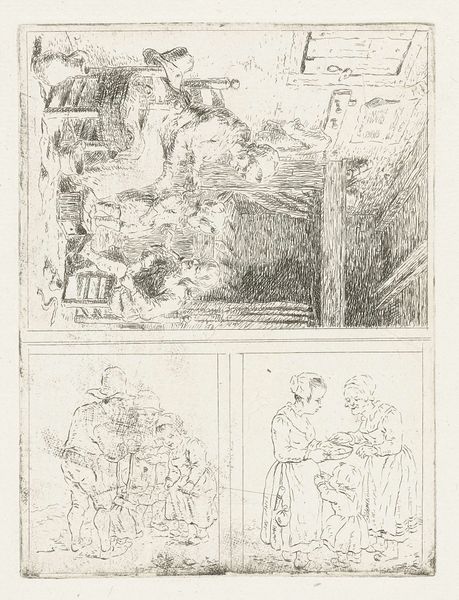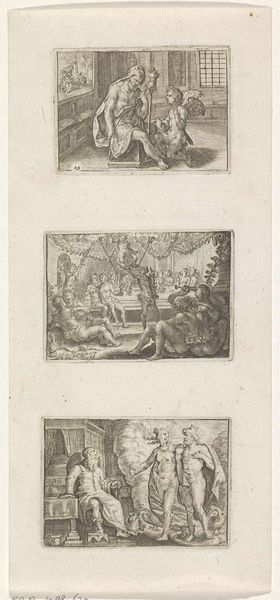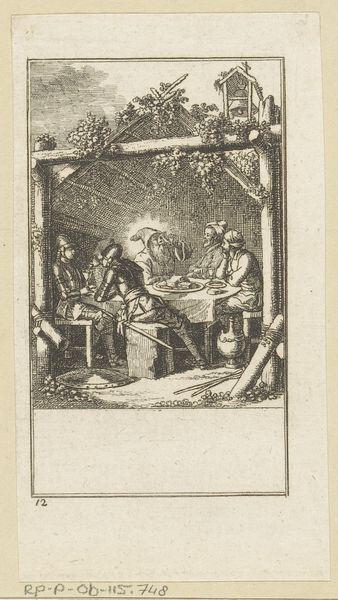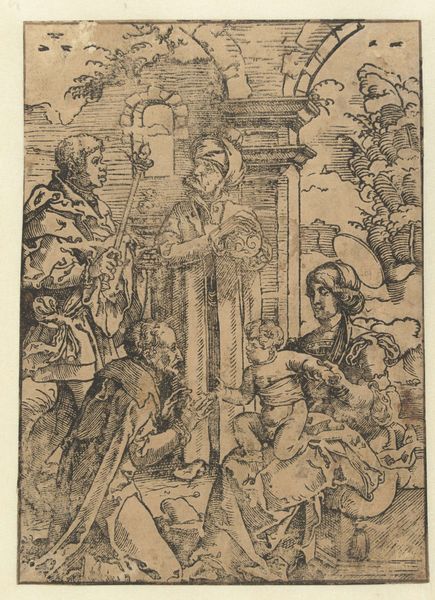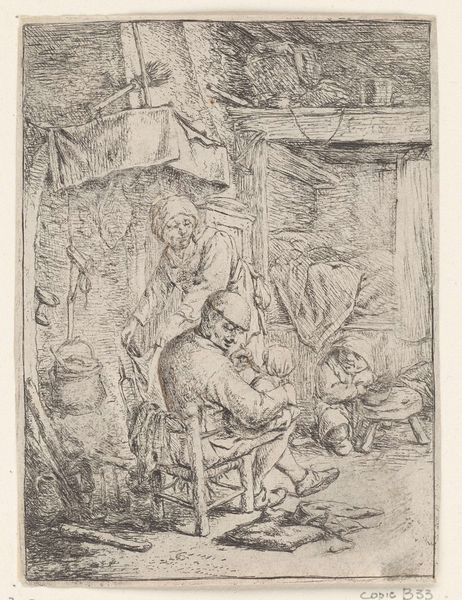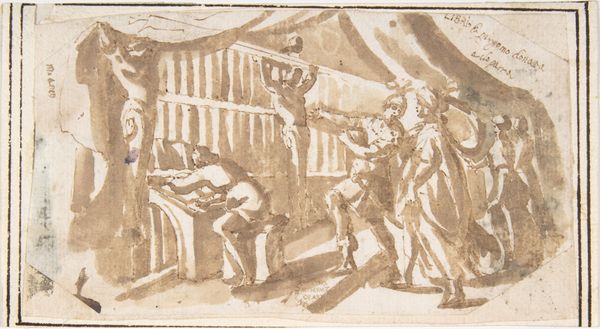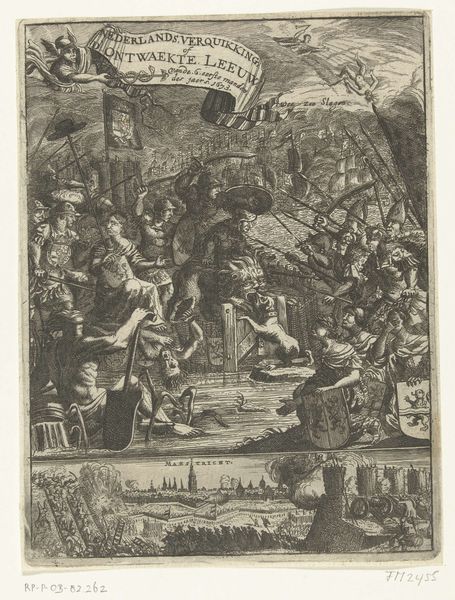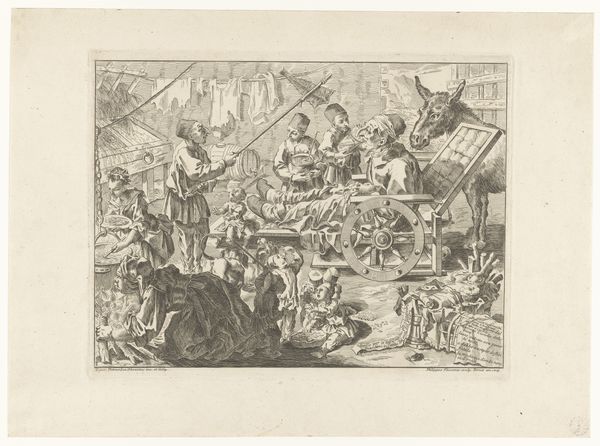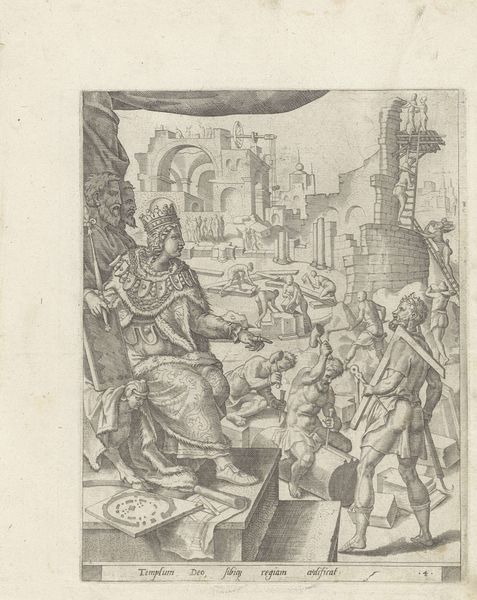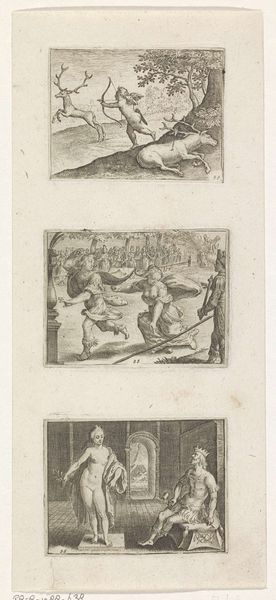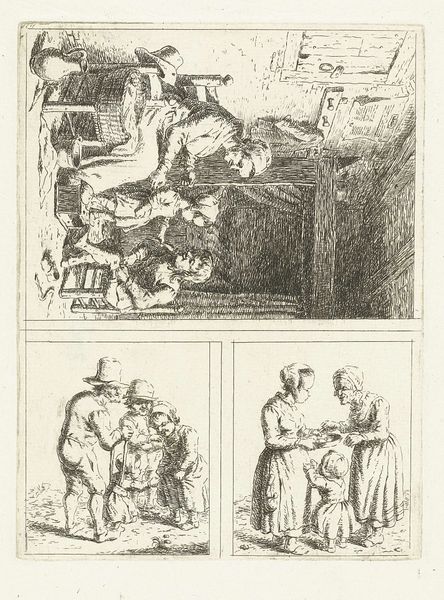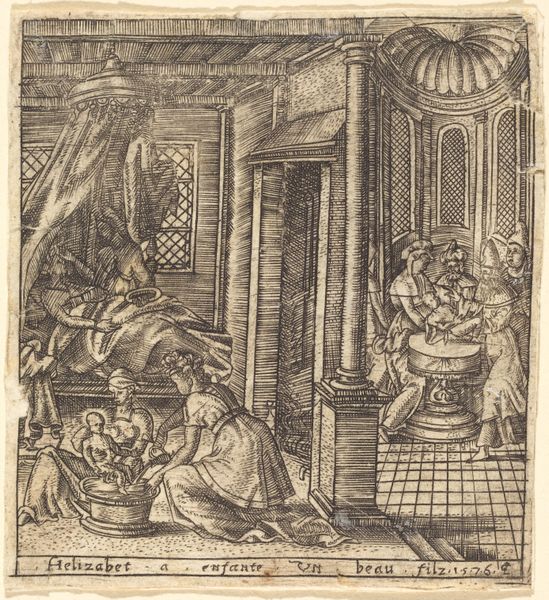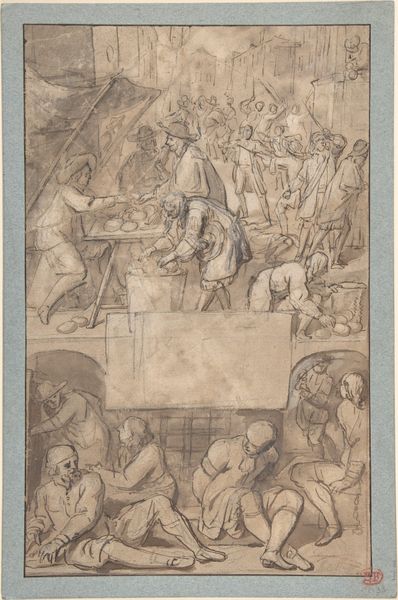
Dimensions: height 160 mm, width 120 mm
Copyright: Rijks Museum: Open Domain
Curator: Welcome! We’re standing before Christina Chalon's "Vier voorstellingen van het gezinsleven," created between 1758 and 1808. This drawing, rendered in ink on paper, resides here at the Rijksmuseum. Editor: My first impression is a sense of quiet domesticity. The piece is segmented into four vignettes; there's an intimacy to these scenes, yet a certain detachment created by the composition itself. I can almost feel a sense of division within a union, within one familial group... Curator: Precisely! Each scene likely aimed to represent distinct aspects of familial roles and life stages, laden with symbols pertinent to Dutch societal values during that period. In the upper scene, could it depict an elderly couple in bed, potentially death, perhaps indicating generational continuity and heritage? Editor: It certainly invites reflection on social constructs surrounding the family. Look closely at the attire of the woman in the bottom left—it signifies a working-class woman engaging with a young child. One might argue Chalon intended to convey a realistic portrayal of family in its diverse form rather than a bourgeois ideal, with a potential critique on societal structures embedded there... Curator: That's interesting! However, let's not neglect the romantic leanings in her works overall. Consider the composition –the soft, sketch-like style fosters a nostalgic feel, softening any harsh social critique. She often portrays universal human emotions through domestic narratives. What do you see, though, within these repeated images of women? Editor: This repeated depiction, especially the nurturing mother archetype, can perpetuate gendered expectations but conversely highlight their central role within this society. Curator: True; the woman holds a pivotal position! Also, consider the narrative sequencing. Did the artist seek to trace life events and familial relationships within each rectangle? If you examine them altogether as panels, might they narrate some specific meaning? Editor: These small domestic scenarios capture not just a moment in time, but also larger political structures reflected through smaller emotional engagements... What appears so accessible invites larger discussion... Curator: In truth, standing here before these drawings is an exercise in recognizing echoes, shared dreams, fears that travel through families, regardless of social strata. They encourage one to delve inward—to see personal narratives in what appears outwardly like familiar family themes. Editor: For me, Chalon pushes for that critical lens, urging me to engage beyond simple aesthetic admiration, interrogating those implicit ideologies shaping gendered family dynamics, not only back then but that still continue today...
Comments
No comments
Be the first to comment and join the conversation on the ultimate creative platform.
